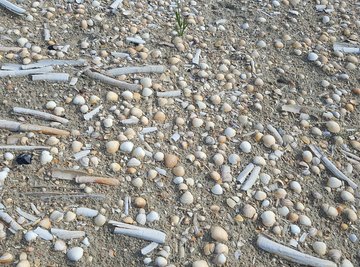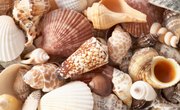
Seashells are fascinating because of their diverse shapes, sizes and colors, and they can be an engaging subject for science projects on many topics. Think about the animals that make shells and what role they play in marine or freshwater environments. Use seashells to learn about ecology, evolution and morphology. Collect seashells on a trip to the shore or order them online.
Classification
Collect shells from many different environments, including ocean beaches and tide pools, lakes and river estuaries. Sort the shells by size and shape, then use a seashell guide to identify the shells and the animals that produced them. Label the collection using paper tags or permanent markers. Attach the shells to a poster board or trace them with markers, then include information about each type of shell.
Ecology
Using shells from various areas, try to identify what type of environments are represented in the collection. For a basic project, sort shells into different environments (marine, freshwater and river) and draw pictures of each environment and some of the other plants and animals that live there. For a more advanced project, research how shells fit into the ecology of each environment, and report on how the types of shells in a collection might indicate how healthy an environment is.
Food Webs
Create a chart that shows how each shell fits into a food web. Research what the shell-producing animals eat as well as what animals eat them. Then draw a web of these other plants and animals with the shell at the center by gluing it to the picture or tracing it.
Shell Composition
Shells are made of calcium carbonate secreted by the animal. Calcium carbonate dissolves in acidic environments, giving off carbon dioxide gas. Put a seashell in a glass of vinegar and observe and record any changes in the shell over several days. Then take the shell out of the glass and try to crush it. What happens? Try this with different types of shells to see if they dissolve at different rates.
Resources
About the Author
Heather Vidmar-McEwen has worked as a writer and editor for academic and nonprofit organizations since 2002. She has a master's degree in archaeology from Indiana University. Her articles specialize in culture, history, science, crafts and the natural world.
